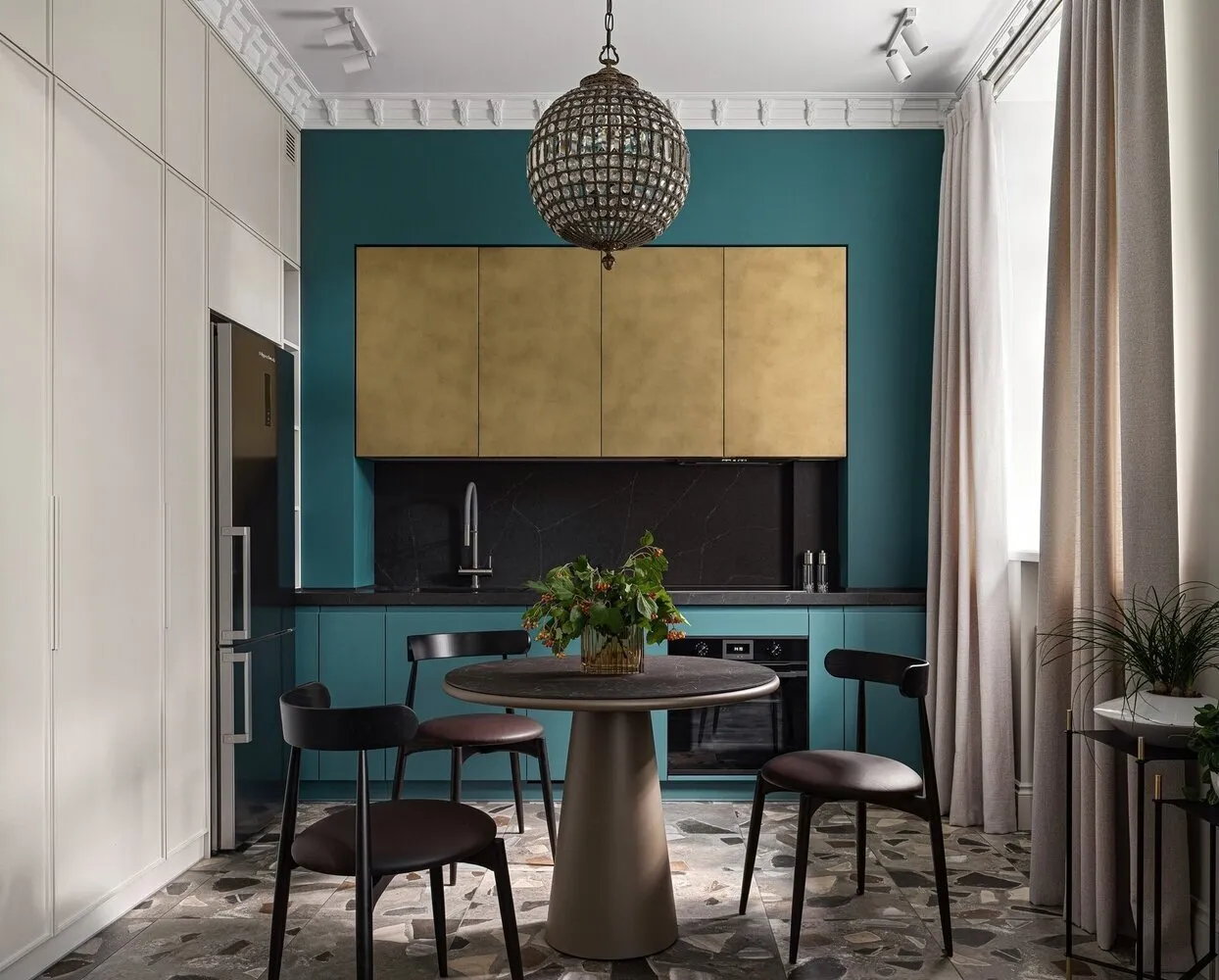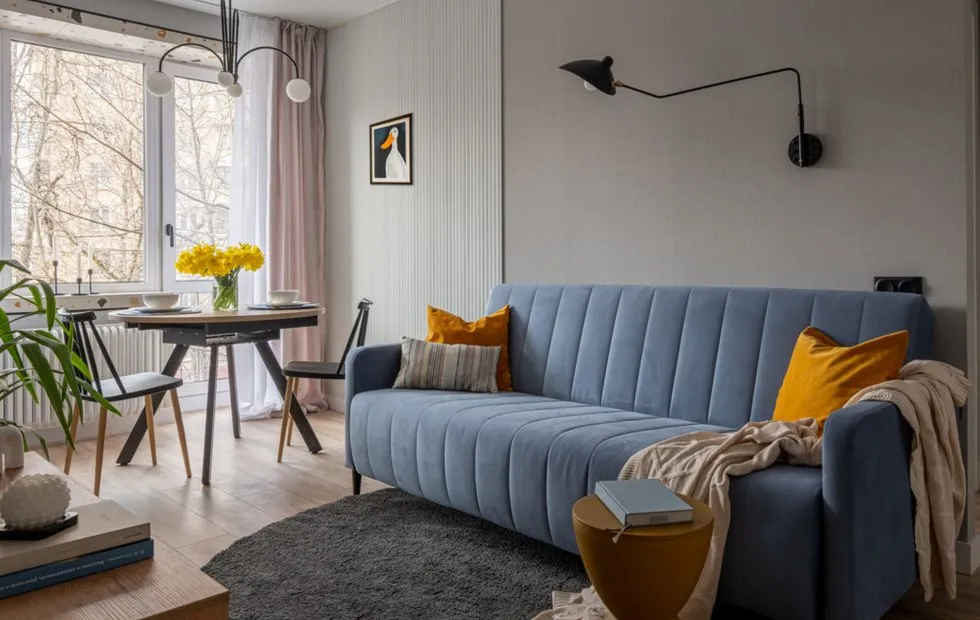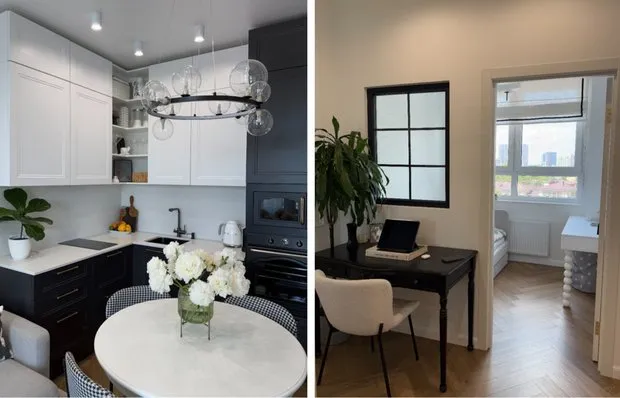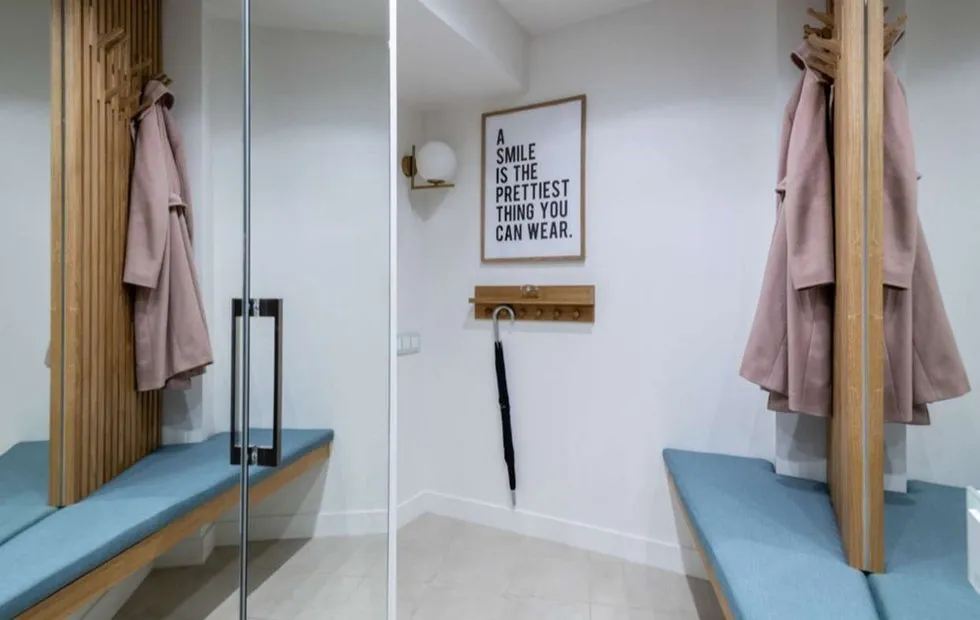There can be your advertisement
300x150
Myth or Fact: Better Soundproofing in Stalin-era Apartments
Let's find out!
"You can't hear neighbors at all in a Stalin-era apartment" - say happy owners of apartments in buildings from the 1930s-50s. "In a new building, you can hear neighbors moving chairs" - complain residents of modern housing developments. Are old buildings really so much better at soundproofing than new ones? Or are these just nostalgic myths? Let's compare real technical specifications and find out where it's actually quieter - in a 70-year-old building or a modern new development.
Main points from the article:
- Walls in Stalin-era buildings are 2-3 times thicker than modern ones - 60-80 cm vs. 20-25 cm;
- Brick and reinforced concrete from the 1940s-50s are denser and heavier than modern counterparts;
- Stalin-era layouts minimize sound transmission between apartments;
- Modern materials are more technologically advanced, but lag in mass - the main factor for soundproofing;
- Soundproofing quality depends not only on materials but also on proper construction techniques.
Wall thickness: when size really matters
Inter-apartment walls in Stalin-era buildings are 60-80 centimeters thick. This is two layers of brick masonry with an air gap or monolithic reinforced concrete. Modern walls in new buildings are 20-25 centimeters thick, made of gas concrete or ceramic blocks.
The physics of soundproofing is simple: the thicker and heavier the barrier, the harder it is for sound to pass through. A wall 80 cm thick made of dense brick weighs 1200-1500 kg per square meter. A modern wall made of gas concrete weighs only 300-400 kg per square meter.
This mass difference is critical for soundproofing. Heavy materials better absorb low-frequency sounds - voices, music, TV. Light modern materials handle high frequencies well but let bass and human speech through.
Material quality: when there was no economy
Brick for Stalin-era buildings was made from selected clay and fired at high temperatures. This produced dense, heavy material with minimal porosity. Modern brick is often more porous - this improves thermal insulation but worsens soundproofing.
Reinforced concrete in Stalin-era buildings was mixed with large amounts of cement and gravel. Density reached 2400-2500 kg/m³. Modern lightweight concretes have a density of 1800-2000 kg/m³. This 20-25% difference might seem small, but it's critical for soundproofing.
Mortar used for masonry was also different. Cement-sand mixtures without plasticizers or additives created dense joints with no air bubbles. Modern masonry mortars are lighter and more porous - better for thermal insulation, worse for sound.
Constructive features
In Stalin-era buildings, technical rooms, storage areas, and built-in wardrobes often occupied spaces between apartments. These "buffer zones" further dampened sounds. Living rooms in neighboring apartments rarely shared walls.
Stalin-era ceilings were reinforced concrete slabs 16-22 cm thick, compared to modern 14-16 cm. Plus wooden floors on joists created an additional soundproofing layer. Modern buildings often pour screed directly over the slab - cheaper but worse for soundproofing.
Windows in Stalin-era buildings were wooden, double-glazed with a 15-20 cm air gap. They're not inferior to modern double-glazed windows and sometimes even outperform them due to the greater distance between panes.
Layout solutions
Stalin-era apartments were designed to minimize acoustic discomfort. Bedrooms didn't adjoin neighbors' kitchens, children's rooms weren't next to living rooms. Bathrooms were placed one above the other, forming "wet zones".
Halls and entryways often served as sound buffers between living rooms of different apartments. Long halls with turns further dampened sound. Modern buildings try to eliminate unnecessary space, placing rooms directly adjacent.
High ceilings (3-3.2 meters) also play a role in acoustics. Sound scatters in large volumes, becoming less concentrated. In modern apartments with 2.5-2.7 meter ceilings, sound is "trapped" in smaller spaces.
Modern materials: technology vs. mass
Gas concrete, ceramic blocks, multi-layer structures - modern materials are more technologically advanced. They retain heat better, easier to process and cheaper to produce. But for soundproofing they fall short of heavy brick and concrete.
Attempts to compensate for the lightness of modern walls with additional soundproofing layers don't always work. Mineral wool, polystyrene foam are good at high frequencies but let low ones through - exactly those that disturb living.
Multi-layer structures are effective only with proper installation. Any "thermal bridges" made of rigid materials nullify the entire soundproofing. In real construction, such violations are very common.

Design: Irina Bdaytsieva
Quality of workmanship
In the Stalin era, buildings were constructed thoroughly without cutting corners on time or materials. Every joint was filled with mortar, masonry was laid strictly level. Poor work was unacceptable - construction sites were inspected by commissions.
Modern construction is carried out under strict time and cost constraints. Builders may not fully fill vertical joints in masonry, use substandard mortar, or violate construction techniques. Each violation creates a "sound hole".
Quality is especially compromised in mass housing of economy class. Developers economize on everything, including wall thickness and material quality. In premium projects, soundproofing can be no worse than Stalin-era buildings but costs significantly more.
Engineering systems
In Stalin-era buildings, engineering utilities were laid in special shafts and niches isolated from living spaces. Heating pipes were thick-walled, cast iron - they didn't transmit vibrations.
Modern thin-walled pipes, especially plastic ones, create more noise when water flows through them. Ventilation ducts are often made from thin metal that resonates. Air conditioners, which were not in Stalin-era buildings, add their own noise.
Elevators in old buildings were located in separate machine rooms isolated from apartments. Modern shaftless elevators save space but their mechanisms are closer to living spaces.
Exceptions to the rule
Not all Stalin-era buildings are equally good in terms of soundproofing. "Stripped" wartime Stalin-era buildings were built quickly with material economy. Their soundproofing may not be better than Khrushchev-era buildings.
Modern business and premium-class housing can have excellent soundproofing. But this is achieved through expensive technologies: double walls, special soundproof materials, floating floors.
Some new developments use monolithic construction with thick walls - 25-30 cm. They approach Stalin-era soundproofing, but still fall short due to lighter materials.
Measurable characteristics
The soundproofing index of a typical Stalin-era wall is 54-58 dB. Modern gas concrete walls show 43-47 dB. The difference of 10-12 dB is clearly audible - about 3-4 times quieter.
For comfortable living, 52-54 dB soundproofing is sufficient. Stalin-era buildings exceed this standard, while modern ones often fall short. To bring soundproofing to the required level, additional insulation is needed.
Soundproofing of floors in Stalin-era buildings - 50-55 dB vs. 45-48 dB in new developments. Therefore, neighbors above are also heard less.
Subjective factors
Stalin-era buildings mainly house adults and established residents. Fewer small children, youth parties, renovations. New developments often house young families with kids - objectively creating more noise.
Stalin-era courtyards are usually inside the block, protected from traffic noise. New developments often sit along busy roads. External noise masks neighbor sounds, creating the illusion of better soundproofing in Stalin-era buildings.
Practical observations from residents
- Stalin-era apartment dwellers rarely complain about hearing neighbors. "I only realized I had neighbors to the right when I met them in the entrance hall" - a typical comment.
- In new developments, complaints about noise are among the most frequent problems. You can hear conversations, TV, furniture movement, children crying. Especially difficult for residents of monolithic-frame buildings with thin partitions.
Potential solutions for new developments
- Additional wall soundproofing with 10 cm mineral wool can improve the situation by 8-12 dB. "Floating" floors with damping pads reduce impact noise transmission.
- Proper furniture placement also helps. Wardrobes along shared walls act as additional soundproofing. Carpets, heavy curtains, soft furniture absorb reflected sounds.
Verdict: it's true
Soundproofing in Stalin-era buildings is indeed better than in most modern ones. This is an objective fact confirmed by measurements and residents' feedback. Thick heavy walls, quality materials, thoughtful layout - all contribute to acoustic comfort.
Modern technologies can provide the same soundproofing but require additional costs. In mass construction, soundproofing is often economized on, resulting in formally compliant but uncomfortable living spaces.
If quietness is critically important in an apartment, a Stalin-era building remains one of the best choices. But it's worth noting that not all buildings of this type are equal, and 70-year-old structures may require significant investment in technical condition.
Cover: Design project by Irina Bdaytsieva
More articles:
 Khrushchev vs Euro Renovation: What Can Be Done for 200 Thousand Rubles
Khrushchev vs Euro Renovation: What Can Be Done for 200 Thousand Rubles Maximize Space in a 36 sqm Eurodouble
Maximize Space in a 36 sqm Eurodouble Mia Pliyescaya's Apartment on Tverskaya: How the Greatest Ballerina Lived at Home
Mia Pliyescaya's Apartment on Tverskaya: How the Greatest Ballerina Lived at Home Narrow 2 sq m Entrance Hall: What to Remove, Add, and Where to Find Space for Everything
Narrow 2 sq m Entrance Hall: What to Remove, Add, and Where to Find Space for Everything Repair in a Khrushchyovka: Where You Can Save Money and Where It's Better Not to Skimp
Repair in a Khrushchyovka: Where You Can Save Money and Where It's Better Not to Skimp Trendy Pendant Lights for Interior: 10 Finds
Trendy Pendant Lights for Interior: 10 Finds In the Designer's Home: 10 Favorite Interior Items of Ekaterina Kotalyevskaya
In the Designer's Home: 10 Favorite Interior Items of Ekaterina Kotalyevskaya What to Hang on the Wall in the Hallway: 7 Fresh Ideas
What to Hang on the Wall in the Hallway: 7 Fresh Ideas